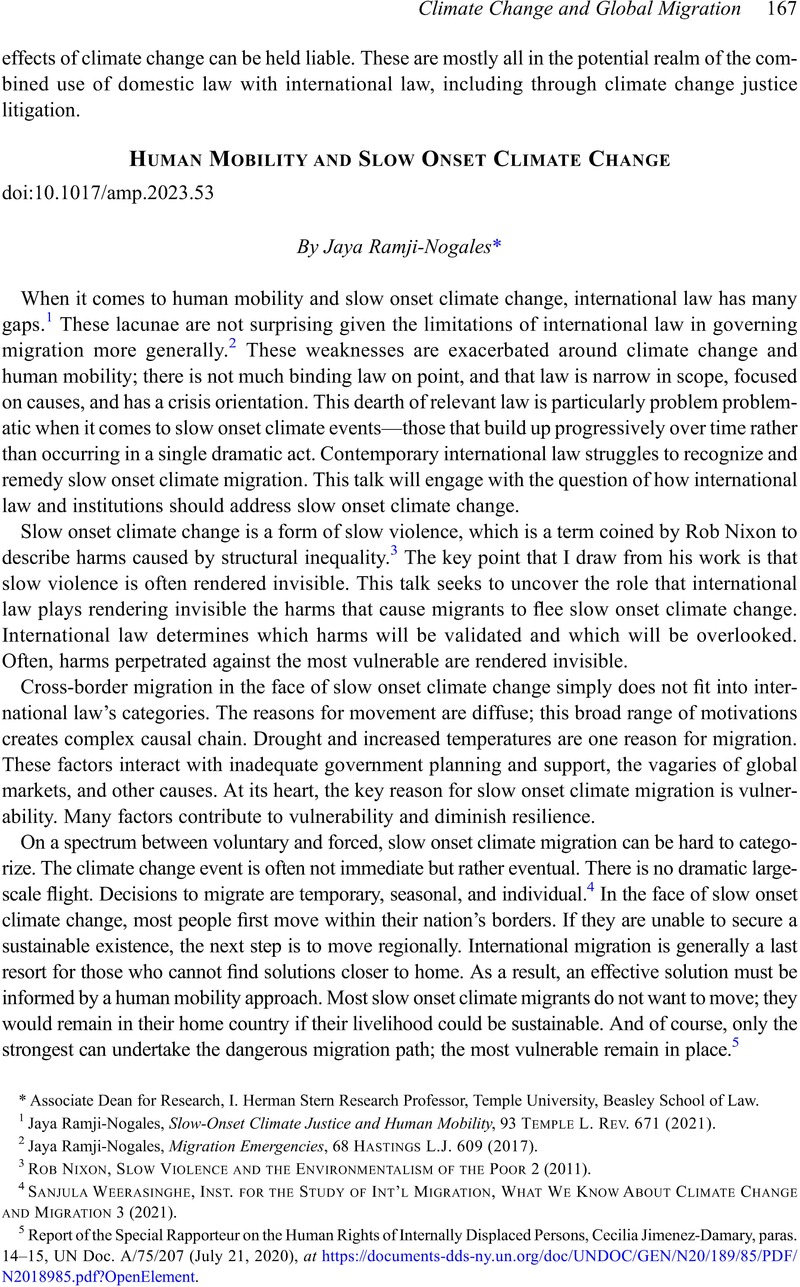No CrossRef data available.
Published online by Cambridge University Press: 24 March 2023

1 Jaya Ramji-Nogales, Slow-Onset Climate Justice and Human Mobility, 93 Temple L. Rev. 671 (2021).
2 Jaya Ramji-Nogales, Migration Emergencies, 68 Hastings L.J. 609 (2017).
3 Rob Nixon, Slow Violence and the Environmentalism of the Poor 2 (2011).
4 Sanjula Weerasinghe, Inst. for the Study of Int'l Migration, What We Know About Climate Change and Migration 3 (2021).
5 Report of the Special Rapporteur on the Human Rights of Internally Displaced Persons, Cecilia Jimenez-Damary, paras. 14–15, UN Doc. A/75/207 (July 21, 2020), at https://documents-dds-ny.un.org/doc/UNDOC/GEN/N20/189/85/PDF/N2018985.pdf?OpenElement.
6 Convention Relating to the Status of Refugees, July 28, 1951, 189 UNTS 137, 152 (entered into force Apr. 22, 1954).
7 UN Framework Convention on Climate Change, The Cancun Agreements: Outcome of the Work of the Ad Hoc Working Group on Long-Term Cooperative Action Under the Convention, para. 25, Dec. 1/CP.16, UN Doc. FCC/CP/2010/7/Add.1, at 6 (Mar. 15, 2011).
8 Teitiota, UN Doc. CCPR/C/127/D/2728/2016.
9 Jane McAdam, Climate Change, Forced Migration, and International Law 61 (2012) (first citing Yakye Axa v. Paraguay, Merits, Reparations and Costs, Judgment, Inter-Am. Ct. H.R. (June 17, 2005); and then citing Malawi African Assoc. v. Mauritania, Communication 54/91, 61/91, 98/93, 164/97 à 196/97, 210/98 (African Commission on Human and Peoples’ Rights May 11, 2000)).
10 Carmen G. Gonzalez, Climate Justice and Climate Displacement: Evaluating the Emerging Legal and Policy Responses, 36 Wis. Int'l L.J. 366 (2019); Maxine Burkett, Climate Reparations, 10 Melb. J. Int'l L. 509 (2009).
11 Ama Francis, Climate-Induced Migration & Free Movement Agreements, 73 J. Int'l Aff. 123 (2020).